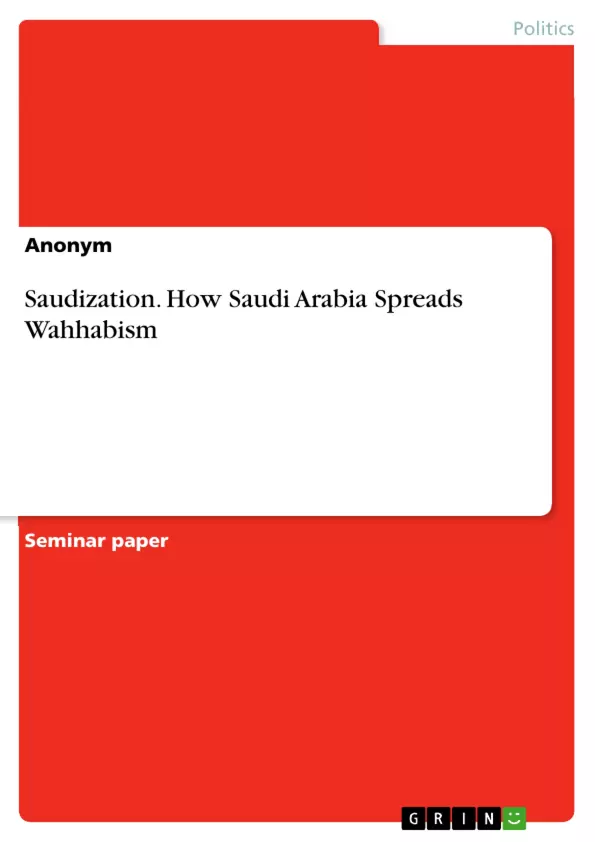After the Bosnian genocide, Saudi aid swept into the country, reforming the Muslim institutions already in place, essentially Wahabifying the region. Workers in Saudi Arabia bring over Saudi culture, including the black face-veil and Wahabi thought into their home countries. Many mosques in the United States are funded by Saudi Arabia, as are many masjids in the world. Controlling Islamic websites and dominating the Sunni world, Muslims have fallen into more and more of a Saudized Islam.
The spread of Wahabism destroys Sufism, saint shrines, and tries to counter liberal Islam. By controlling the mass Islamic religious media through the internet and controlling the two holiest cities in Islam, Saudi Arabia has been able to command its place in society. Through oil and partnership with the United States in its secular state and through asserting its spiritual prowess in social media, Saudi Arabia has taken root in the modern psyche. This study looks at how Saudi Arabia affects the global Muslim world by funding Islamic institutes, Islamic websites, and media. Discovering whether or not the Saudi influence spreads extremism, religiosity, or creates a more cohesive Muslim community.
Inhaltsverzeichnis (Table of Contents)
- Introduction
- Argument
- Wahhabism, Salafism, and Saudi Brief
- 1979 the rise of Political Islam
- Saudization on the Muslim World
- Conclusion
Zielsetzung und Themenschwerpunkte (Objectives and Key Themes)
This paper explores how Saudi Arabia's influence spreads across the Muslim world, particularly focusing on the propagation of Wahhabism and its impact on various Muslim communities. It examines the Saudi government's efforts to establish itself as the religious authority in the Muslim world, its relationship with the United States, and the effects of its policies on different regions.
- The rise and spread of Wahhabism and Salafism
- Saudi Arabia's relationship with the West and its impact on the Muslim world
- The influence of Saudi Arabia on Islamic institutions and practices
- The role of Saudi Arabia in shaping the global Muslim community
- The relationship between Saudi Arabia's political power and its religious influence
Zusammenfassung der Kapitel (Chapter Summaries)
- Introduction: This chapter introduces the context of Saudi Arabia's influence in the Muslim world, highlighting the country's political and economic power. It discusses the tensions between modernization and traditional values, the Saudi government's efforts to establish a “Westernized” society, and the impact of these changes on the population.
- Argument: This section outlines the key arguments of the paper, focusing on how Saudi Arabia spreads Wahhabism through various means, including funding mosques, universities, and Islamic websites. It explores the consequences of this influence, examining whether it leads to extremism, religiosity, or a more cohesive Muslim community.
- Wahhabism, Salafism, and Saudi Brief: This chapter provides a historical overview of Wahhabism and Salafism, examining their origins and beliefs. It explores the relationship between Wahhabism and the Saudi royal family, highlighting the political and religious significance of the movement.
- 1979 the rise of Political Islam: This chapter focuses on the Iranian Revolution and its impact on Saudi Arabia. It discusses how the revolution challenged Saudi Arabia's position as the leading power in the Muslim world and prompted the country to strengthen its own religious authority.
Schlüsselwörter (Keywords)
The key themes and concepts explored in this paper include Wahhabism, Salafism, Saudi Arabia, Islamic influence, religious authority, political power, modernization, extremism, Islamic institutions, and the global Muslim community.
- Citar trabajo
- Anonym (Autor), 2020, Saudization. How Saudi Arabia Spreads Wahhabism, Múnich, GRIN Verlag, https://www.grin.com/document/591401



